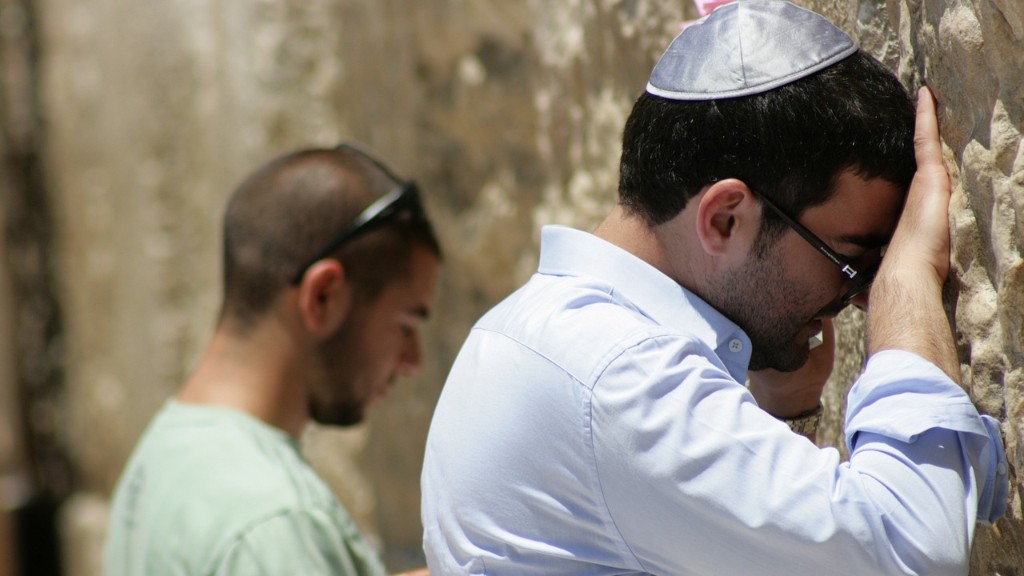Origin of the Star of David
The Star of David is an iconic symbol associated with Judaism, but what exactly is its importance and meaning? To understand why the Star of David is an important symbol to many Jews, it is essential to look at its history. The symbol originated in the late 17th century, although its exact origins are somewhat mysterious. Some scholars date it to ancient times, while others maintain that it is a more modern innovation. Whatever the case may be, it’s clear that the Star of David has since become a powerful symbol that represents the Jewish faith.
The term ‘Star of David’ is derived from the Hebrew word ‘Magen David’, which translates to ‘Shield of David’. This is thought to refer to the biblical King David, who is believed to have used the symbol in his royal shield. Interestingly, the symbol was not widely associated with Judaism until the 19th century, when it was adopted as the official symbol of the Zionist movement and the modern state of Israel.
Significance of the Star of David
For many Jews, the Star of David is more than just a symbol; it is a source of pride, hope and connection to their faith. Since the symbol was first adopted as the official symbol of the Zionist Movement and the state of Israel, it has become inextricably linked to Jewish identity. Because of this, the Star of David is a powerful symbol that has come to represent the resilience, strength and unity of the Jewish people. It is often used on mezuzahs, which contain Scripture from the Torah, and worn as jewelry.
Furthermore, throughout history the symbol has been used as a source of protection for the Jewish people. During the Holocaust, many Jews were forced to wear a yellow Star of David in public as a means of identification; although this was an oppressive symbol of oppression, it is now seen as a symbol of Jewish survival and resilience.
The Star of David in the 21st Century
Today, the Star of David is an important symbol for Jews all over the world. It is used to commemorate important events, such as the death of a family member, as well as to celebrate milestones such as weddings and bar mitzvahs. It is also frequently used as a symbol of peace and understanding between Jews and non-Jews. The Star of David is also a powerful symbol of hope in the face of adversity, and is seen as a reminder of the strength, resilience and unity of the Jewish people.
A Symbol of Unity
Many Jews view the Star of David as a symbol of unity, as it is a reminder of the common faith that is shared by Jews around the world. The six points of the star represent the six directions to God: north, south, east, west, up, and down. These directions represent the fact that God is seen as being ever-present, as well as the idea that Jews should strive to be united in faith, regardless of geographical differences. The six points of the Star of David are seen as a reminder to Jews of their shared identity, as well as to the importance of their faith.
The Spiritual Meaning of the Star of David
The Star of David is often viewed within the context of the Kabbalistic tree of life. The six points of the star represent the six attributes of God: mercy, justice, wisdom, compassion, strength, and beauty. It is thought that by striving to embody these qualities, a person can become spiritually complete. The symbol is also thought to represent the union of two people, and is often used as a symbol of hope, love and strength.
The Star of David in Popular Culture
The Star of David is a widely recognized symbol that has been incorporated into popular culture in many different forms. It can be seen on flags, logos and emblematic jewelry. It is also widely used in the design of religious books and artifacts, and often used as a symbol of peace. It has been featured in art, music and literature, as well as in movies as a powerful symbol of hope and identity.
The Impact of the Star of David
The Star of David has come to hold great personal and spiritual significance for many Jews. Beyond its historical and religious significance, the symbol is a powerful reminder of Jewish survival and resilience. For many Jews, the Star of David is a source of pride, inspiration and hope. It is a powerful symbol of peace and unity, and a reminder of the shared history, values and faith of the Jewish people.
The Use of the Star of David by Non-Jews
The use of the Star of David by people of other faiths has become increasingly common in recent years. On one hand, some people feel that it is a way to show support and solidarity with the Jewish community. However, others feel that this is disrespectful, as the symbol has so much personal and spiritual significance for Jews.
Whatever the case may be, the Star of David continues to be an important symbol for many Jews all over the world. It is a source of pride, survival and connection to the Jewish faith, and a powerful symbol of peace and understanding.
Modern Adaptations of the Star of David
Due to its powerful symbolism, the Star of David has been adapted in many different ways. In recent years, the symbol has become associated with the LGBTQ+ community, as well as other social movements such as feminism and environmentalism. It has also been used in popular culture, often as a symbol of identity and representation.
Additionally, the symbol has been adapted for other religious traditions, such as Christianity and Islam. For example, many Christians and Muslims use the symbol as a reminder of their shared faith and respect for the beliefs and values of each other’s religion. This use of the Star of David is thought to further emphasize the importance of interfaith solidarity and understanding.
Conclusion
The Star of David is an important symbol of the Jewish faith. It is a powerful reminder of Jewish survival and resilience, as well as a symbol of unity, hope and identity for Jews around the world. Over the centuries, the symbol has been adapted for different social and religious contexts, further emphasizing its importance and relevance in the 21st century.

